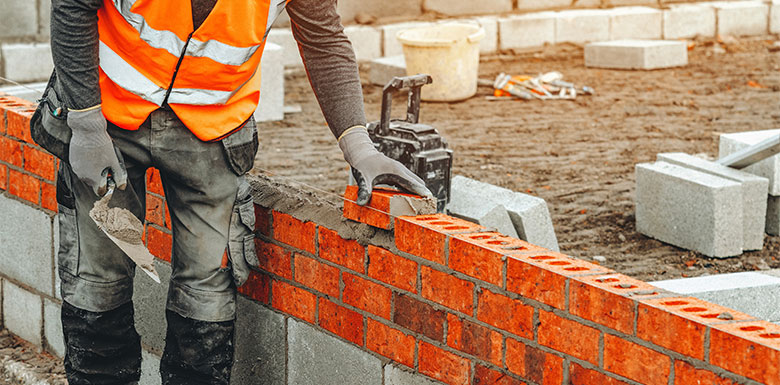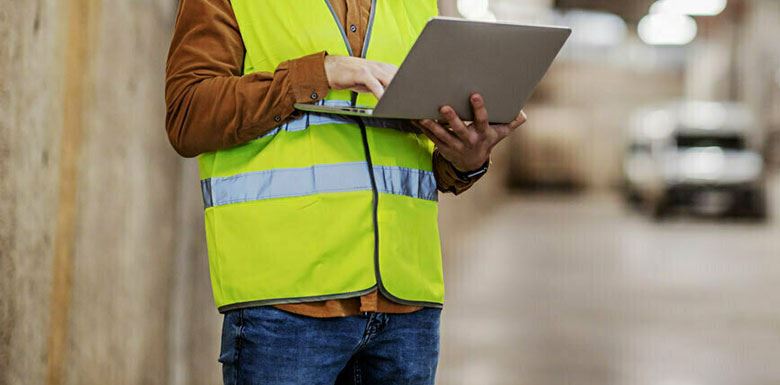How to become a bricklayer
 In this article
In this article
- Why should you consider a career as a bricklayer?
- What does a bricklayer do?
- What qualifications do you need to be a bricklayer in the UK?
- How long does it take to become a bricklayer in the UK?
- What other skills do you need to become a bricklayer?
- How much can you earn as a bricklayer?
- Grow your reputation as a Which? Trusted Trader
An essential entry-level job in the construction industry, bricklaying might be the oldest continual building profession out there. Necessary for practically all construction projects, a good bricklayer can earn a substantial wage, and long-time ‘brickies’ with plenty of experience are perfectly positioned to future-proof their career as a builder.
However, while bricklaying is typically considered a beginner position for those getting into construction, brick and masonry work is not without its nuances and complexities, and those hoping for a successful career in this role will need to master a range of essential skills and courses before they’re ready to step onto their first worksite.
With that in mind, here’s a closer look at how to become a bricklayer in the UK – including the key qualifications you’ll need, as well as how long you can expect to train for before you start earning.
Why should you consider a career as a bricklayer?
The foundational role of the UK construction sector, bricklayers and masons are arguably the linchpin occupation that holds building projects together – and that makes them an incredibly sought-after position across the length and breadth of the country.
Simply put, brickies are always in high demand. Construction companies of all sizes need them if they hope to complete work on time, and anyone planning on stepping into a more senior construction role will likely need experience as a bricklayer to prove that they have the knowledge necessary to properly carry out their new responsibilities.
In other words, bricklayers will never be short of work, and wages for this particular trade are typically above average – in many cases, you may even get paid on a per brick basis.
Choosing to become a bricklayer is a great jumping-off point for other roles in the construction industry. And plenty of bricklayers feel confident in starting their own construction company after just a few years’ full-time experience on the job.
What does a bricklayer do?
Besides the obvious role suggested by its name, those interested in learning how to get into bricklaying will quickly discover that masonry work like this comes with plenty of tasks other than laying one brick on another.
Here is a quick look at the sorts of jobs you might be asked to carry out if you decided to qualify as a bricklayer:
- Building brickwork structures, such as domestic housing, commercial property, external walls, driveways, etc.
- Measuring out your work area to calculate the number of bricks required to complete that segment of the build.
- Calculating how much mortar to mix, based on the volume of bricks required.
- Mixing construction mortar, both manually and using a cement mixer.
- Laying bricks and mortar in the precise pattern required on a given project.
- Cutting and shaving bricks to size using dedicated brick moulding tools.
- Pointing current brickwork structures with fresh mortar.
- Removing old mortar from older brickwork.
- General maintenance of existing brickwork.
This is not an exhaustive list of a brickie’s daily responsibilities, and you’ll likely be faced with all manner of unique and challenging tasks throughout your time in this trade.
What qualifications do you need to be a bricklayer in the UK?
In order to complete your training as a bricklayer in the UK, you’ll be expected to acquire one or more bricklaying qualifications prior to seeking employment – and in most cases – complete a dedicated apprenticeship scheme as well.
In terms of the key qualifications for a bricklayer position, we’d recommend seeking out one of the following certifications as your first step into this trade:
- Level 1 diploma in brickwork
- Level 2 diploma in bricklaying
- Level 1 certificate in construction skills
- Level 2 diploma in trowel occupations
- T-level in on-site construction
After you’ve earned one or more of these qualifications, you should then seek to join an apprenticeship scheme local to you, as this will be the best way to learn how to put your qualifications for bricklaying into action.
Of course, core accreditations like these are not the only qualifications you’ll need to complete your brickie training, and those who want to take on as much bricklaying work as possible may also get training in working at height, as well as courses around construction insurance and best practices, so they can operate safely on-site.
Getting CSCS-certified as a bricklayer
While not a legal requirement for all work, those wanting to learn how to get into bricklaying would be wise to get CSCS (Construction Skills Certification Scheme)-certified before they start applying for work, as the vast majority of construction companies won’t hire you without one.
How long does it take to become a bricklayer in the UK?
How long you’ll need to spend training as a bricklayer before you’re considered fully qualified will depend on what course or apprenticeship scheme you decide to take.
Most initial courses can be completed in only a few weeks or months. However, for those going down the apprenticeship route, you can expect to spend at least two years in this position before completing your education, with certain advanced apprenticeships lasting even longer.
What other skills do you need to become a bricklayer?
Besides your dedicated bricklayer training, those hoping to find success in their bricklaying career will benefit from cultivating the following skillsets:
- Attention to detail – Requiring dedication and an eye for accuracy, bricklaying work needs constant management and evaluation to maintain work quality throughout a project.
- Dexterity –
- Placing bricks is not as simple as slapping them one on top of the other and calling it a day, and good manual dexterity is required to precisely position each brick in the optimal spot for a smooth finish.
- Patience –
- Bricklaying, by its nature, is not a fast job, and patience is necessary for a good brickie to see through those long and tedious stages of a construction project.
- Physical stamina –
- As with plenty of other trades, good physical stamina is a bonus if you’ll be working on your feet all day.
- Problem solving –
- Rare is the building project that doesn’t require some degree of problem solving, and bricklayers often have to get creative when deciding how best to tackle awkward wall shapes and brick placement.
- Team skills –
- Unlike more independent trades, brickies form part of a core team of tradespeople, making team skills essential for a conflict-free working environment.
How much can you earn as a bricklayer?
Those just starting out on their bricklaying journey may earn around £18,000 a year, but with extra qualifications and hard work, this can quickly climb to well over £40,000 a year – and potentially higher if you decide to start your own bricklaying business.
Grow your reputation as a Which? Trusted Trader
And there you have it: that’s everything you need to know about becoming a bricklayer in the UK. Much like the art of bricklaying itself, learning how to get into bricklaying takes time and patience. But once you’re qualified, you’ll have a solid foundation of skills and experience to build upon in the future.
For example, you may decide to become a self-employed trader after only a few years of being fully qualified. If that’s the case, you may want to consider becoming a Which? Trusted Trader once you start trading.
It’s a great opportunity for growing your business’s reputation in the eyes of potential customers, and all of our Trusted Traders get access to their own personal business page to display customer reviews and previous examples of their work – not to mention a dedicated account manager to help them run everything.
Get in touch with our team today to learn more about the sign-up process, and don’t forget to visit our trade hub for more guides like this one, such as the reasons why you might want to hire tools instead of buying them, and insights into joining the trade industry as a woman.




